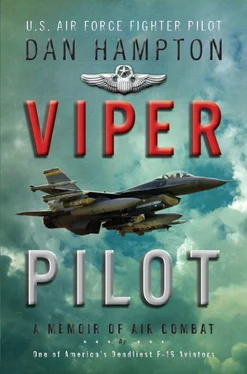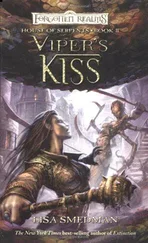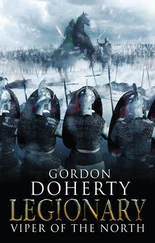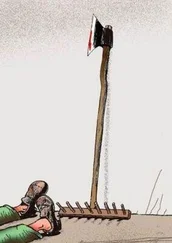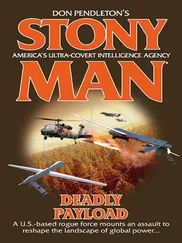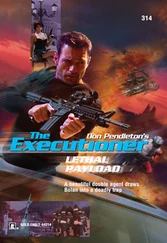They were trained to fight the SA-2. Everything that was known or suspected was thrown at them, along with best guesses at defensive tactics. Practice missions were flown against simulated SAM sites, and, eventually, one of the EWOs understandably asked what the point of all this was.
They were told that they would lead the strike packages into North Vietnam and would hunt and kill the SAMs. A properly puzzled pilot then asked how that was to be done, given the equipment limitations, intelligence uncertainties, and the thickness of the jungle. How do you find a SAM site? There was really no other way to locate a SAM with absolute certainty except to allow the SAM to shoot at its target—then, as long as the Weasel survived, he’d know the location. As long as the Weasel survived.
Right.
In the immortal words of EWO Captain Jack Donovan, “You want me to fly in the back of a tiny little jet with a crazy fighter pilot who thinks he’s invincible, home in on a SAM site in North Vietnam, and shoot it before it shoots me? You’ve gotta be shittin’ me!”
You’ve Gotta Be Shittin’ Me. YGBSM. It instantly and irrevocably defined the Wild Weasel mission. It remains so to this day.
In November 1965, the first five Wild Weasel Super Sabre jets arrived at Korat Air Base in Thailand to begin combat operations. Right from the beginning, the Weasels knew that the only way to deal with a SAM was to kill it. You could temporarily suppress a radar by lobbing anti-radiation missiles at it, but that wouldn’t solve the problem, and it would still be alive tomorrow. No, you had to kill it with bombs or cannons. So they teamed up with F-105Ds—a supersonic bomber known as the Thunderchief—and went to work.
Called Iron Hand missions, they would hunt the SAM by flying down into its engagement zone, or envelope. This made the Weasel an attractive target, and the SA-2 target acquisition radar would try to lock the Super Sabre. Once the radar was on air and trying to lock the Weasel, then it could be tracked in turn and located. You could locate it by radar homing or, if the SAM launched, you might see the smoke trail. Sabres and the Thunderchiefs would then bomb and strafe the site to finish it off.
Over time, several essential aspects of this process have not changed. First, the SAM has to stay “on air” long enough to track the target and be seen in turn. Second, the Weasel has to live long enough to find it and successfully attack. Lastly, you couldn’t miss when you attacked, or the SAM—and all the guns around it—would kill you.
Sounds simple enough, right?
Right.
Three days before Christmas, not quite five months since Ross Fobair’s death, Captains Al Lamb and Jack Donovan engaged and killed an SA-2 in North Vietnam. The Weasels had proven their worth and would remain in Vietnam for the duration of the war.
But the F-100F Super Sabres would not.
After nine confirmed SAM kills and a staggering 50 percent Weasel casualty rate, it became apparent that changes had to be made. As far as a new aircraft went, the choice was obvious. The F-105 Thunderchief—called the “Thud,” because of the noise it made while landing—had been involved with the Hunter Killer mission from the beginning, playing the role of the Killer. Why not modify the formidable single-seat fighter bomber into a two-seat variant and make it the new Weasel? Weasels could then do their own killing.
The Thud was definitely a man’s fighter jet, and it outperformed the Sabre in every respect. Much faster—twice the speed of sound at altitude—it was twenty feet longer and some 20,000 pounds heavier. Even so, the F-105 could travel twice as far into enemy territory as the F-100F. Most important, the Thud had five underwing hard points capable of a 6,000-pound weapons payload with a further 8,000 pounds of bombs carried internally. Lots of choices to make SAMs go away.
The U.S. Air Force had Republic Aviation modify the F-105F to incorporate the lessons learned from Southeast Asia. A tandem cockpit was added for the APR-25 RHAW receiver and the EWO. Radar altimeters, better ejection seats, armor plating, and an updated weapons delivery system were also included.
By June 1966, less than a year after Ross Fobair’s shoot-down, the Wild Weasel 3 Program was in combat in Southeast Asia. In all, eighty-six F-105Fs were modified as Weasels, evidence of the seriousness of the Air Force program. The next month, the earlier-generation F-100Fs flew their last combat missions; meanwhile, Operation Rolling Thunder successfully continued turning big trees into toothpicks, and the war dragged on.
It was Secretary of Defense Robert McNamara’s notion that slowly increasing the pressure on North Vietnam would make Ho Chi Minh realize the utter futility of opposing the world’s greatest military. The idea, dreamed up by the Beltway theorists who were somehow permitted to run the war, was called “graduated escalation.”
And it didn’t work.
A true politician, McNamara didn’t understand the application of military power, nor did he accurately assess his enemy. Rolling Thunder simply committed American forces in a piecemeal fashion, and gave the North Vietnamese time to repair damage, shift resources, and study our equipment and tactics. The amateurs in Washington never fully grasped that time was on Hanoi’s side. As the war moved farther north, the Johnson administration gave the enemy every opportunity to learn how to counter American airpower by improving Soviet SAMs.
Five of the first eleven F-105Fs were lost by the end of August 1966, and it was again evident that further improvements to the Weasel were necessary. So along came the F-105G. The G model was a true Weasel, designed and equipped for the sole purpose of hunting and killing SAMs. The APR-25/26 RHAW was replaced with the upgraded APR-35/37 series. Its increased fidelity and sensitivity would allow greater targeting accuracy and, hopefully, better survivability for the crew.
The G model also carried Westinghouse AN/ALQ-105 electronic jamming pods in a pair of blisters under the fuselage. This permitted a much more powerful countermeasure response and freed up two more underwing hard points for additional weapons. The more capable ALR-31 system necessitated a redesign of the wingtips to give the warning sensors greater coverage of the surrounding sky.
All of these improvements represented lessons learned the hard way and, in many cases, from lives lost. With the APR-35/37 passive detection system to find the SAM radars, the ALR-31 to warn of a missile launch, and the ALQ-105 jammer to confuse enemy radars, the F-105G was ready to fight.
And fight it did.
From the latter half of 1967, Weasels flew from their Royal Thai Air Force bases to hunt and kill the rapidly proliferating SAMs. All told, the F-105s flew more than 20,000 combat sorties. Over 300 Thuds were lost in the fighting, 126 in 1966 alone, though not all were Weasels. Of those, 103 were brought down by SAMs and Triple-A. It was an enormously dangerous and costly mission.
The enemy’s Tet Offensive of 1968 had shown that the North Vietnamese were in no way defeated and Robert McNamara’s amateurish meddling in tactics had failed completely. His Rolling Thunder plan had cost hundreds of aircraft and the loss of more than a thousand highly talented aviators. McNamara himself had resigned his position in late 1967 and fled to become president of the World Bank. He never lived down his culpability nor justified his God complex. Lyndon Johnson, also personally and politically finished, announced in March 1968 that he would not be seeking reelection. Johnson would die on his ranch in January 1973; McNamara lingered on until 2009. I like to imagine that the ghosts of the 58,178 Americans both men sent to early graves were waiting for them on the other side.
Читать дальше
